- info@naturebylennart.com

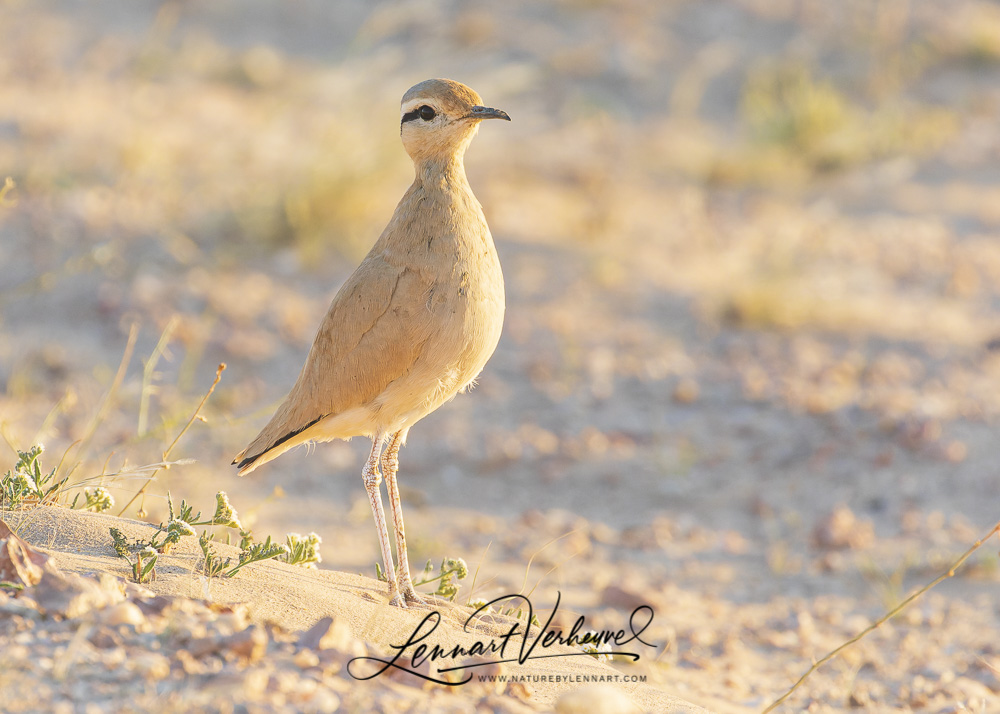
A little while ago I was in the Western Sahara looking for a new cat species: Sand Cat! Although searching for the cat mostly meants going out at night, naturally we also went out during the day. That gave us the opportunity to see some nice birds as well. There aren’t a lot of birds in the Sahara but the birds that do live here are top notch!
The prettiest are the larks of the desert. The Greater Hoopoe-lark was the main species I whished for. A very large lark with a long hoopoe like bill and striking white wings when it flies: naturally a bird to be dreaming of! Luckily it turned out not to be that hard to find and it even allowed itself to be pictured nicely.
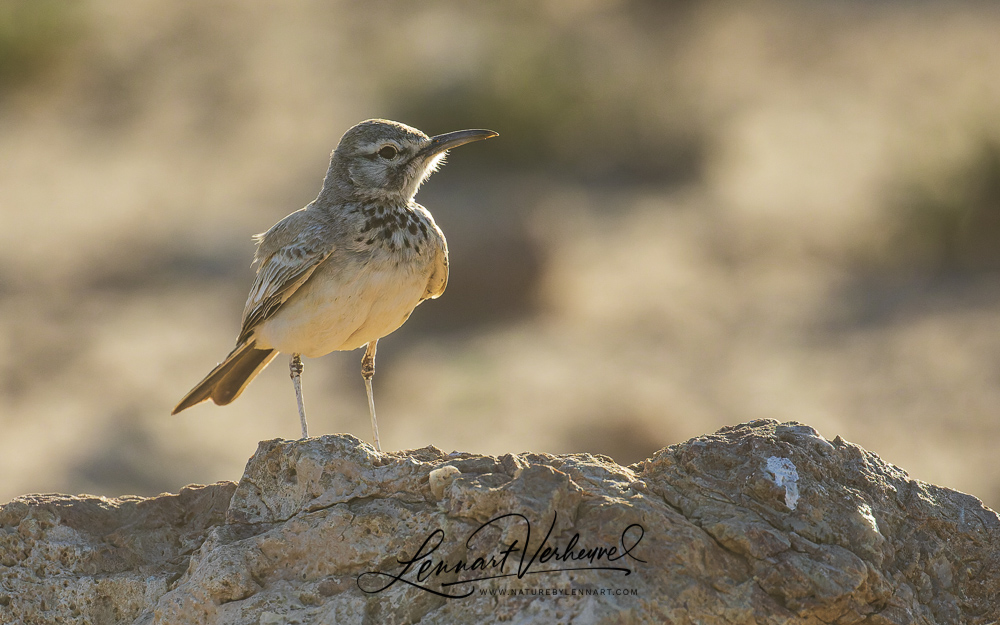
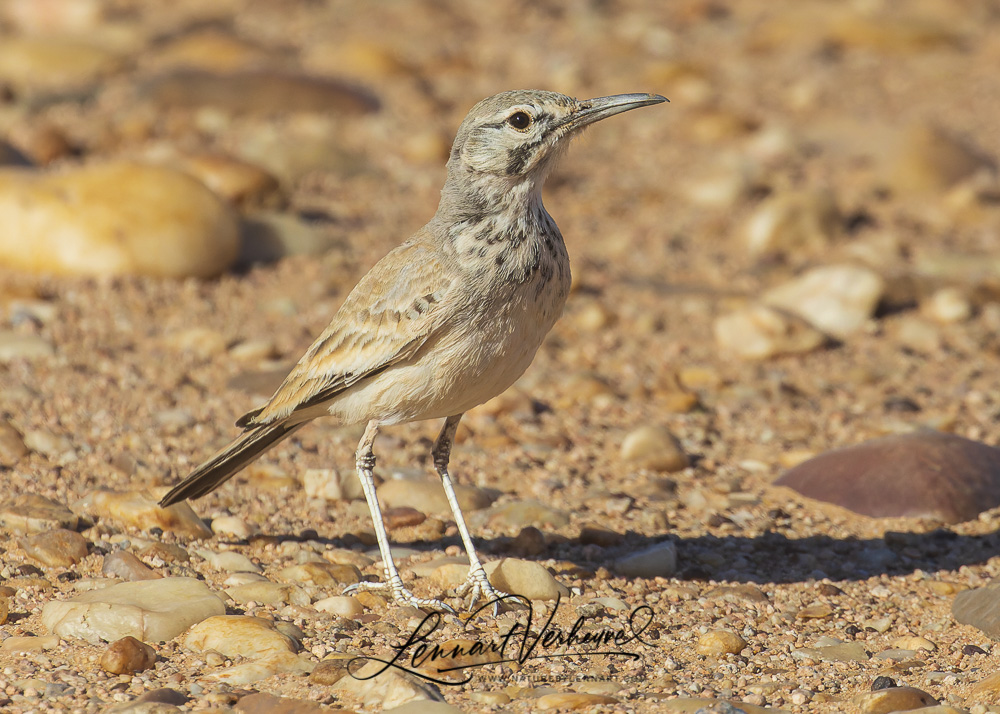
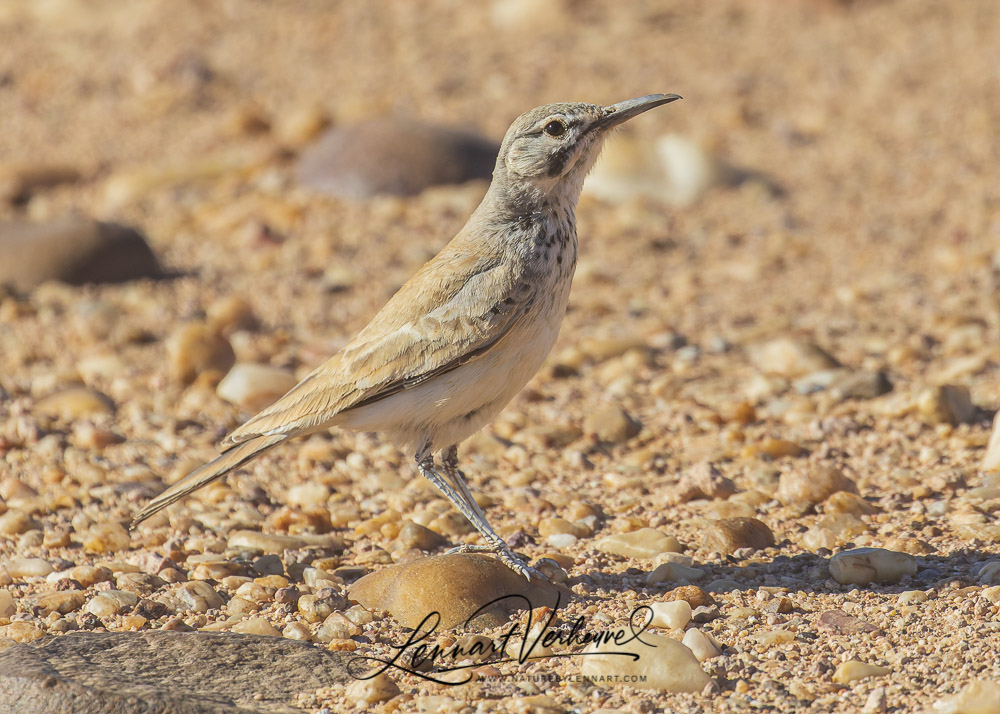
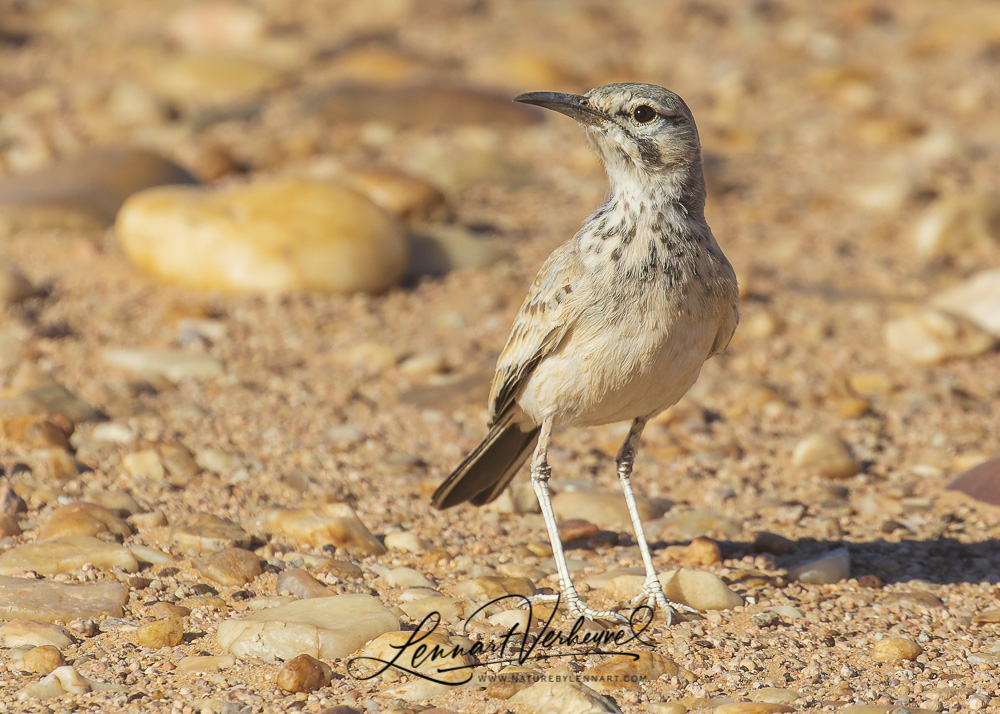
Greater Hoopoe-lark
A different lark that was very high on my wishlist was the Temminck’s Horned Lark. We do have Horned Larks in the Netherlands but even so it was a much desired species for me. In this area they look different however, where a normal Horned Lark has yellow, this one has white.
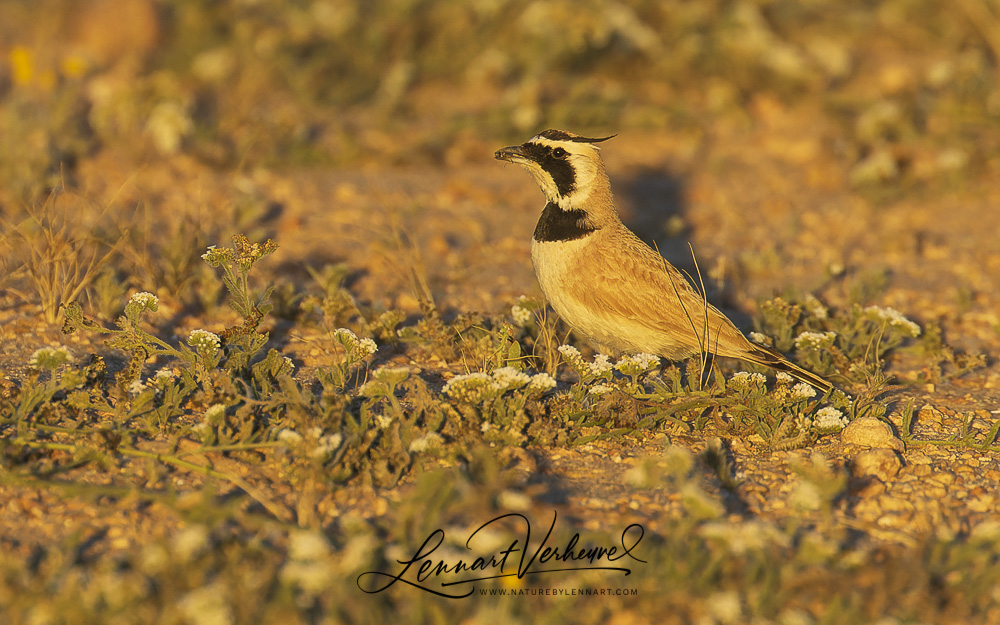
Temminck’s Horned Lark
The Greater Short-toed Lark was not a new species for me but it’s still nice to see the bird up close.
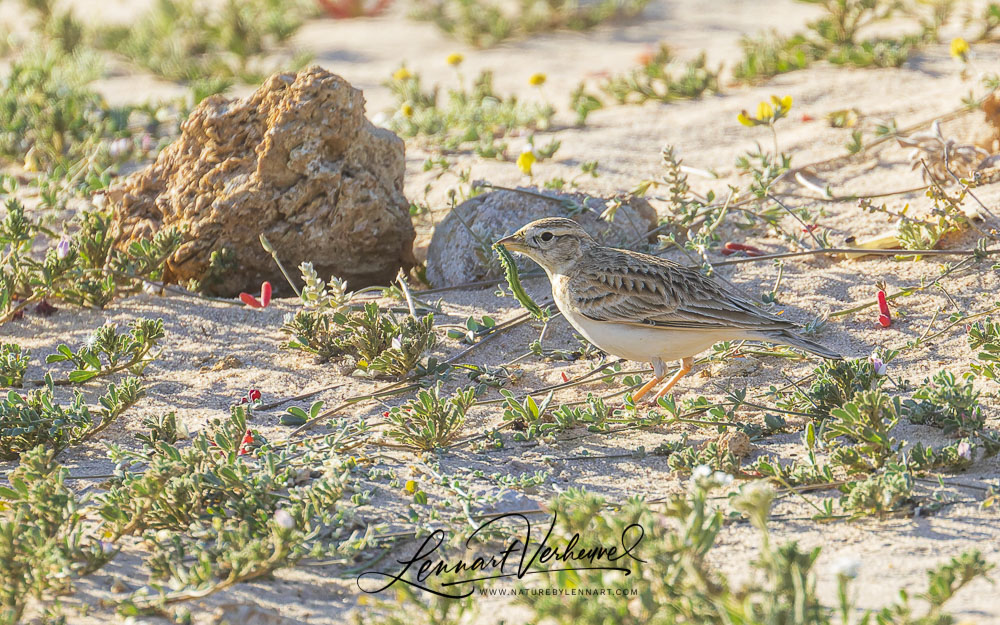
Greater Short-toed Lark
The Bar-tailed Lark was a new one though. I had seen Desert Lark and the Bar-tailed Lark is a tinier and more elegantly build lark.
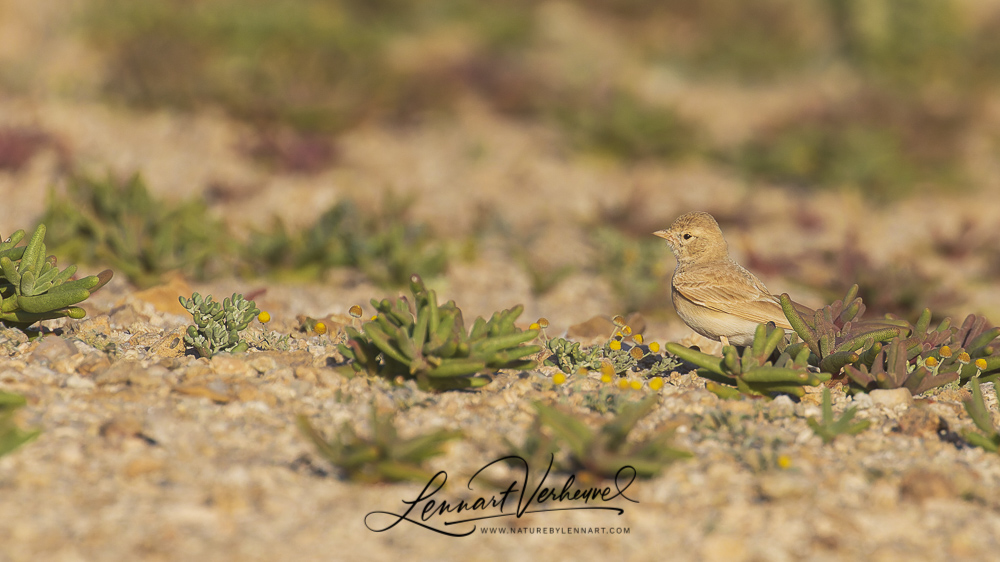
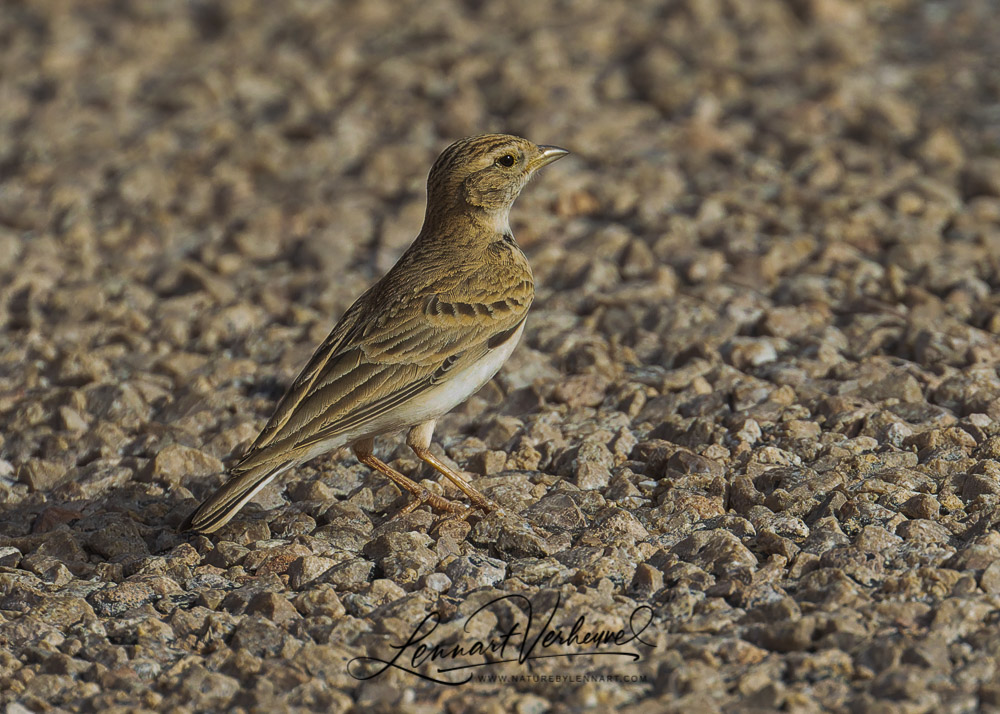
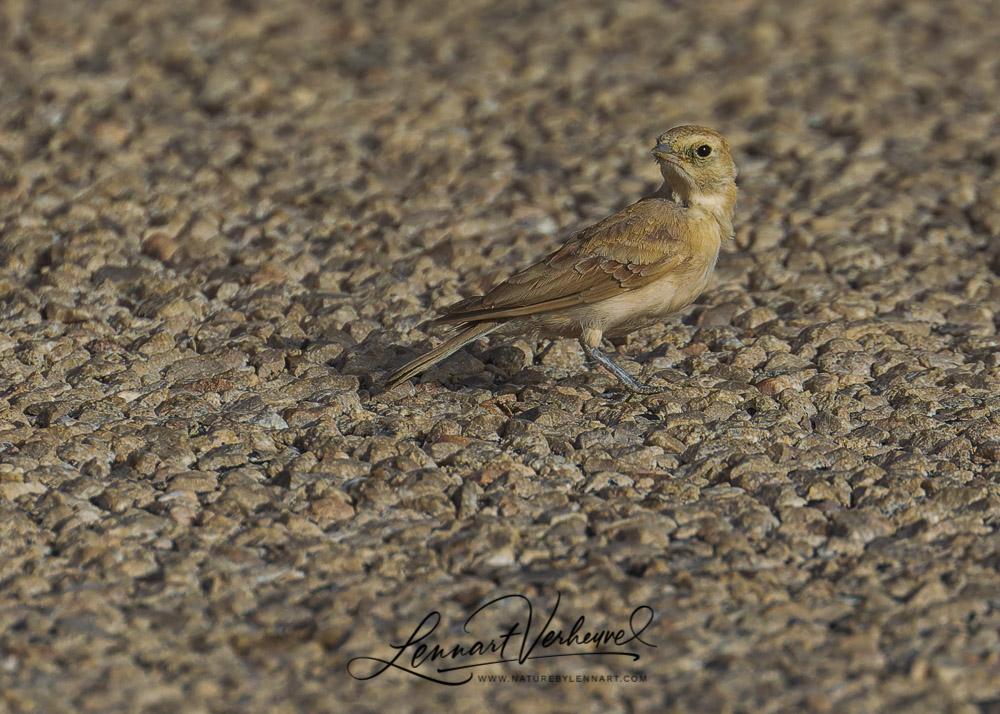
Bar-tailed Lark
Black-crowned Sparrow Lark is quite a mouthful and also an appealing lark of the desert. I hadn’t expected this bird, but it turned out to be quite easy to find.
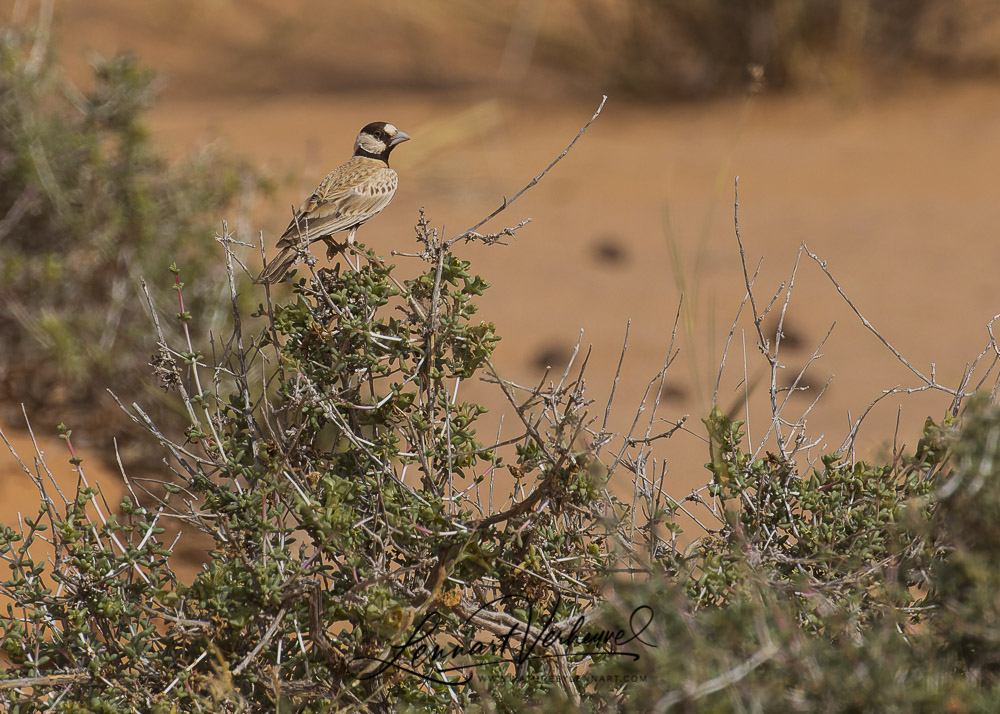
Black-crowned Sparrow Lark
A Thekla’s Lark doesn’t differ much from a Crested Lark, but it is still nice when it suddenly hangs loudly singing above the car.
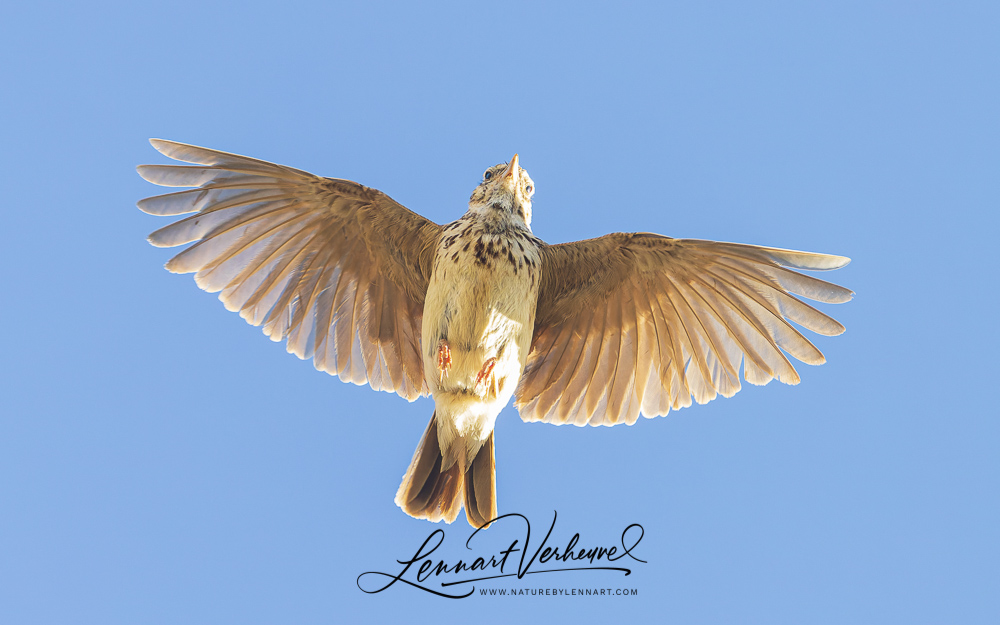
Thekla’s Lark
The lark that was the most rare of the bunch is however Dunn’s Lark and that one showed itself especially nice. In a nice, soft, evening sunshine, up close: awesome!
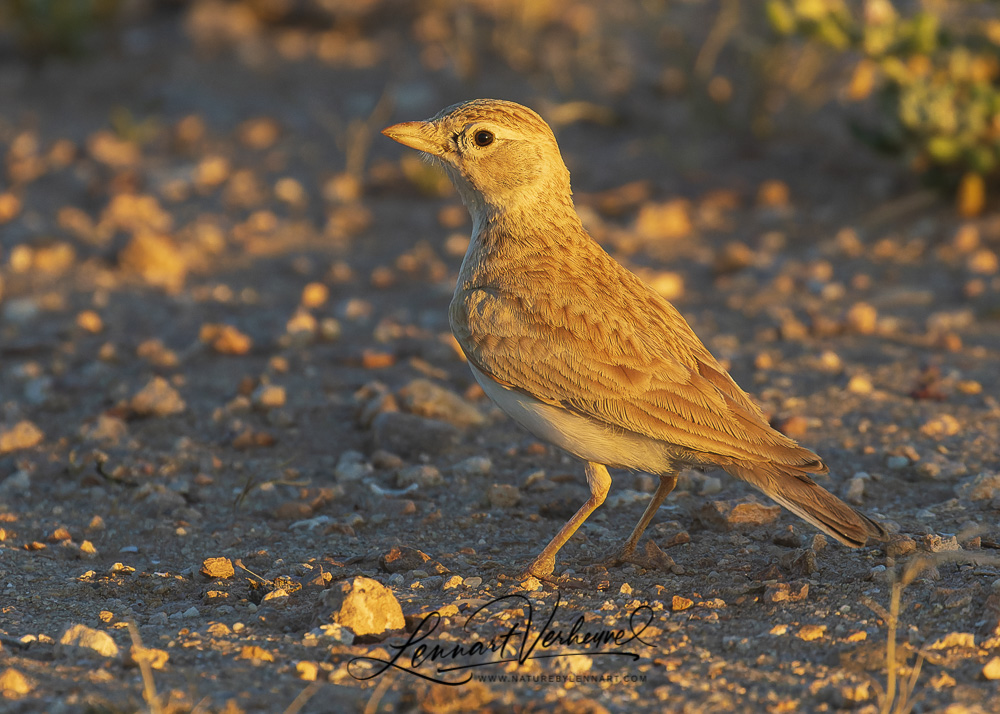
Dunn’s Lark
A different family of birds that is at least as appealing as the larks are the wheatears. Of course Desert Wheatear was present, the males are especially nicely coloured.
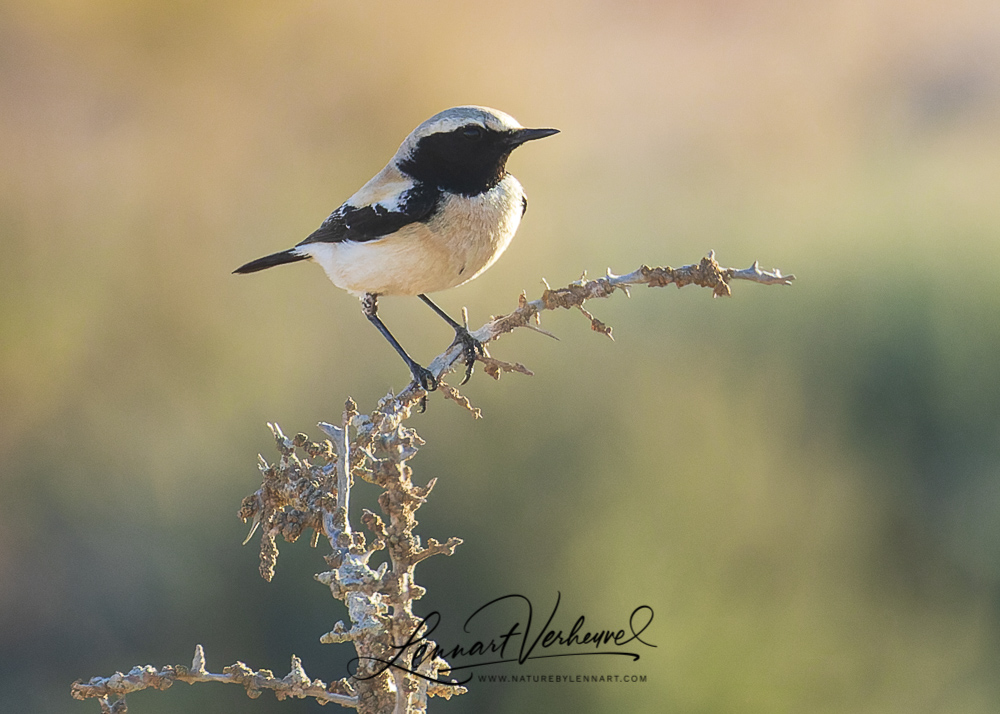
Desert Wheatear
Also a White-crowned Wheatear was very nice.
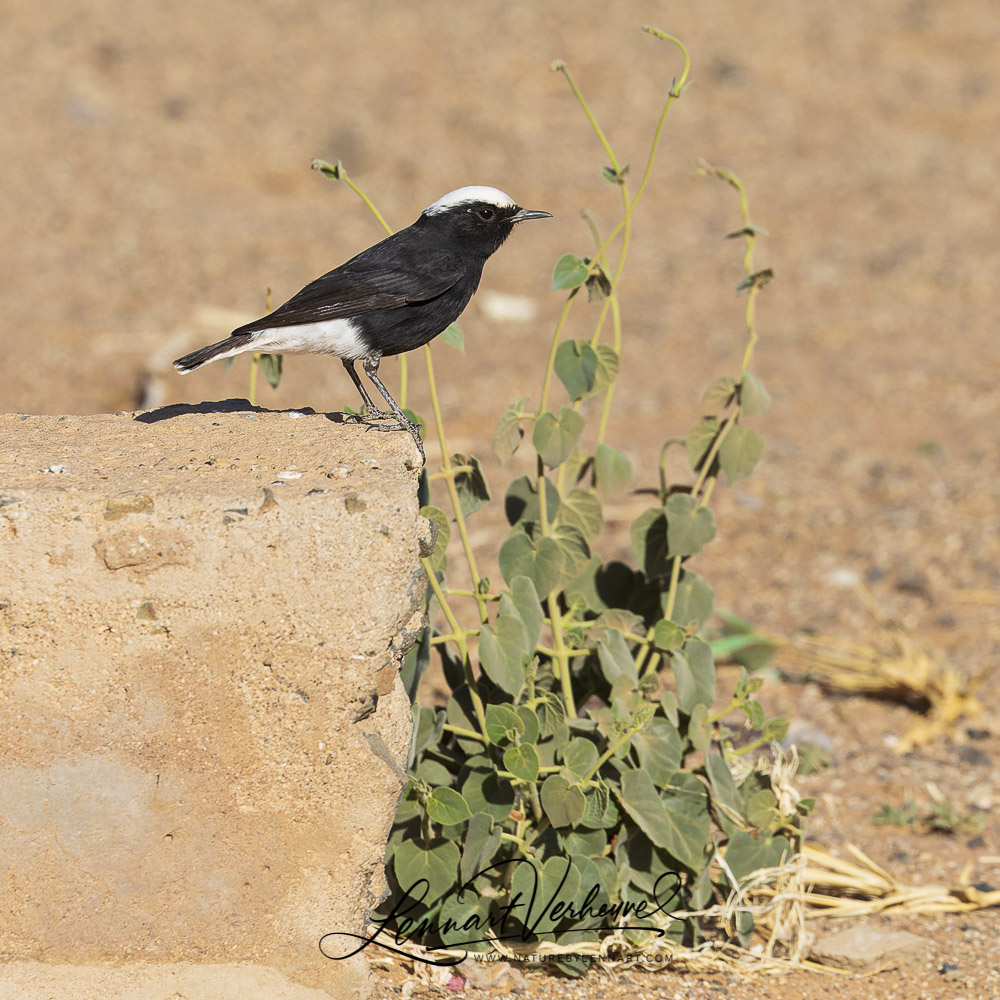
White-crowned Wheatear
The species that I hadn’t seen before was the Red-rumped Wheatear. Luckily I ran into one and even a beautiful male! Sadly it didn’t let me get as close as I had hoped, but it is still a nice bird!

Red-rumped Wheatear
Finally there are the birds that do not have their whole family with them in the Sahara but are all very nice individuals. One bird I had never seen before was the Cream-coloured Courser. I wasn’t too optimistic about my chances of seeing one, but it turned out to be very easy to find. A few birds even let themselves get pictured in a nice soft evening sunshine close to the road. Although it is difficult to make a choice, this might have been my favourite bird of the trip.

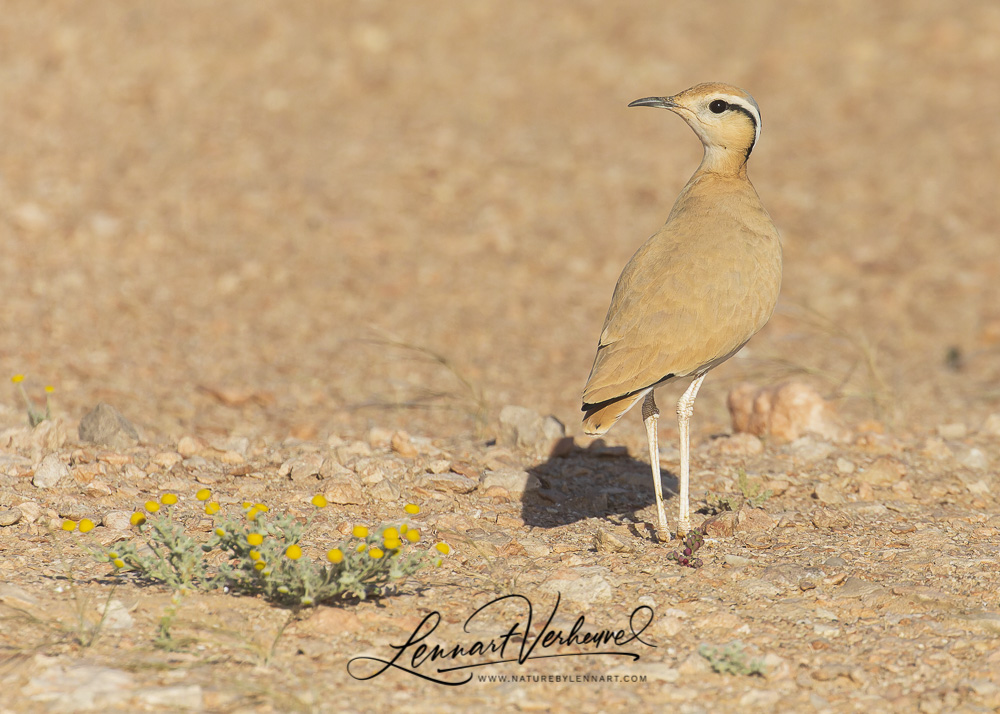
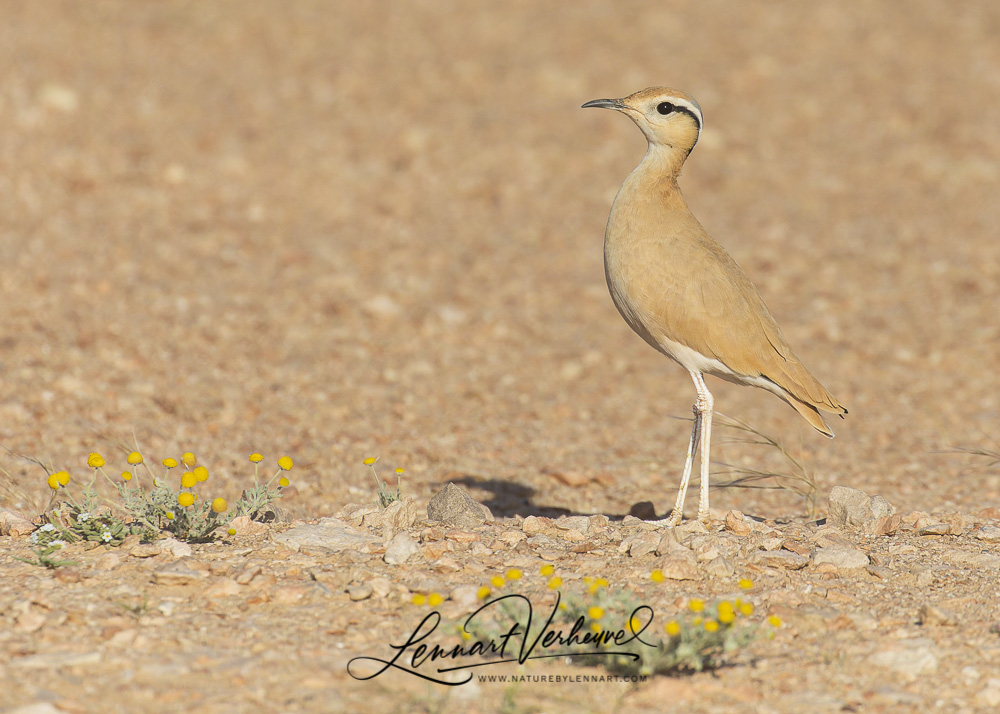
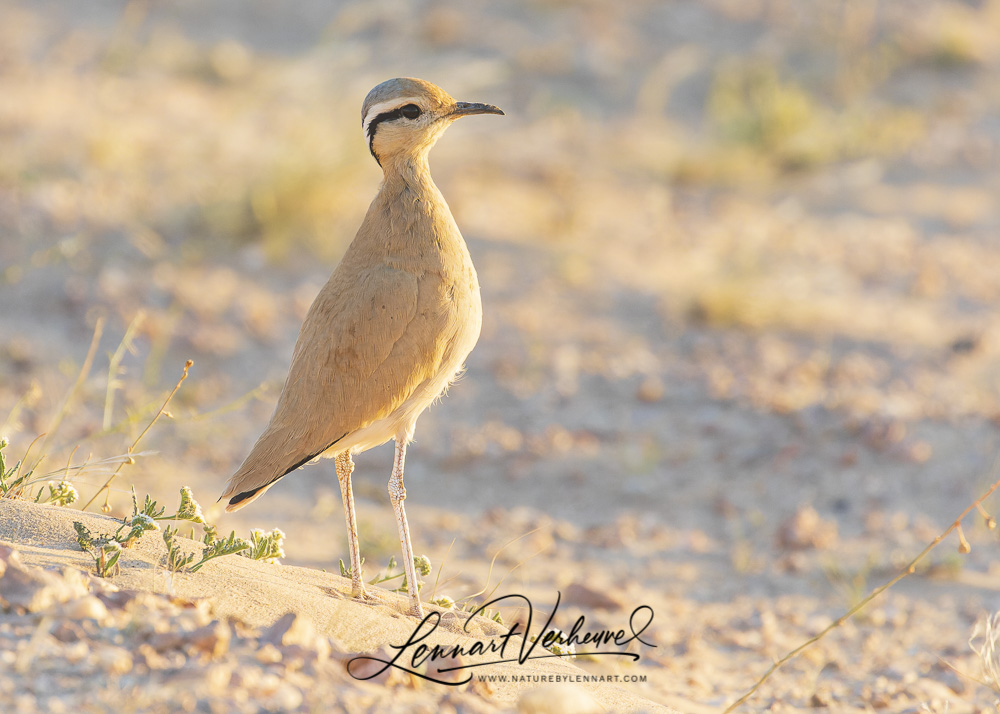

Cream-coloured Courser
The other bird I hoped to see was the Cricket Warbler. A very local speciality so you can’t turn home without having seen one! He turned out to be more difficult than I had thought, but when I spend one hour really searching for it on the last evening it was not hard to find.
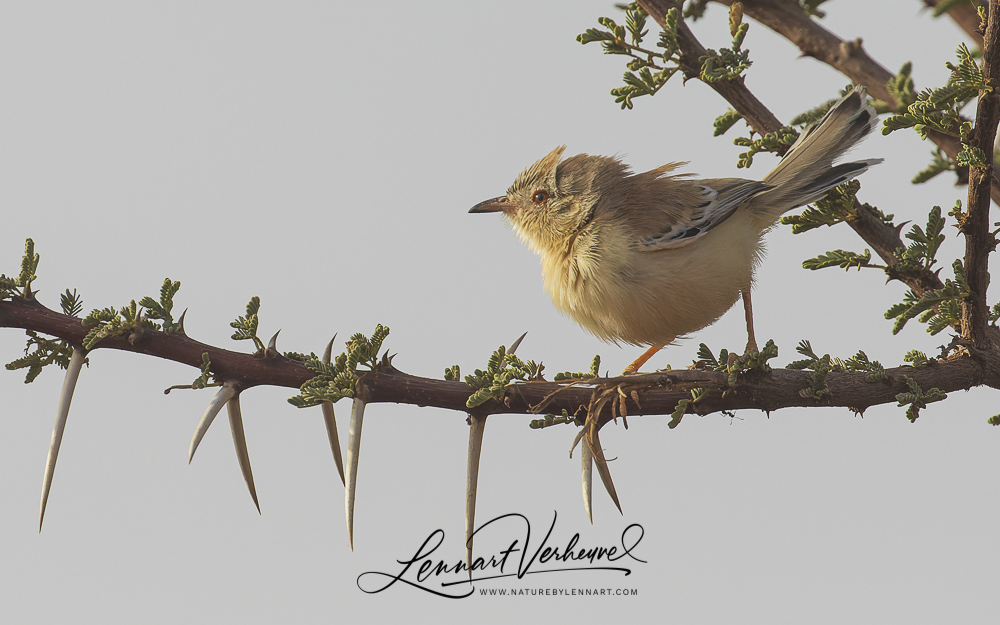
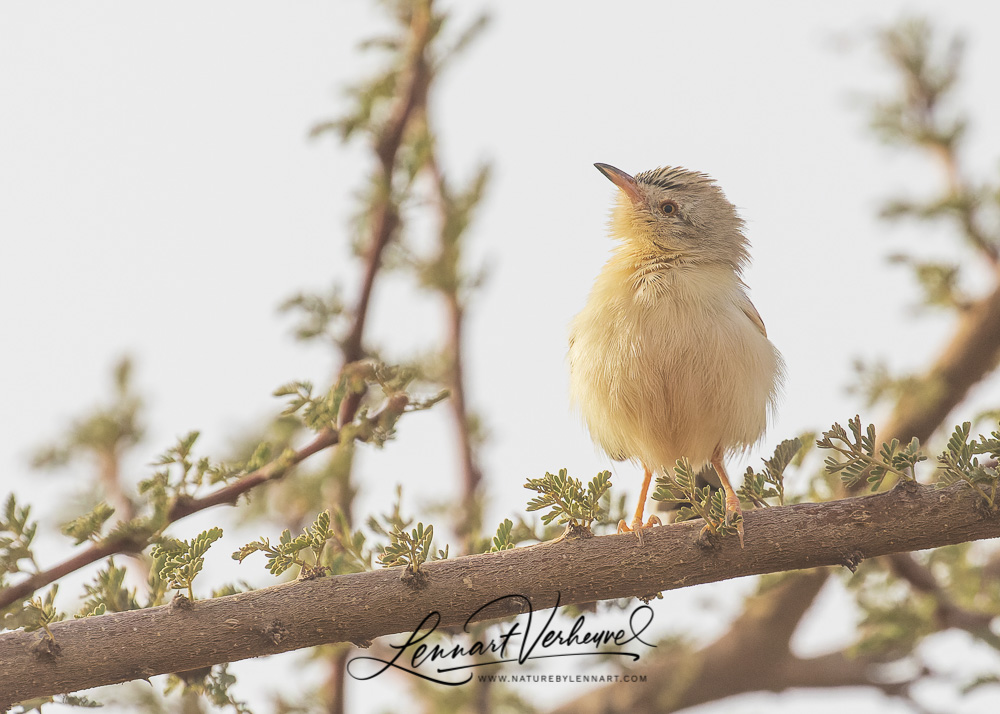
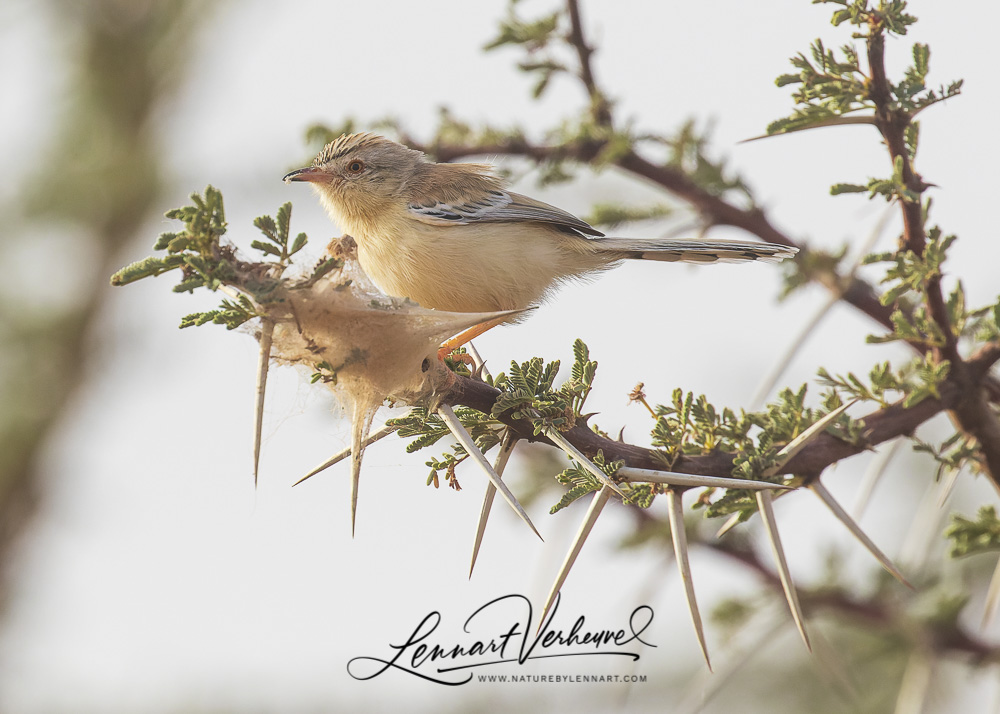
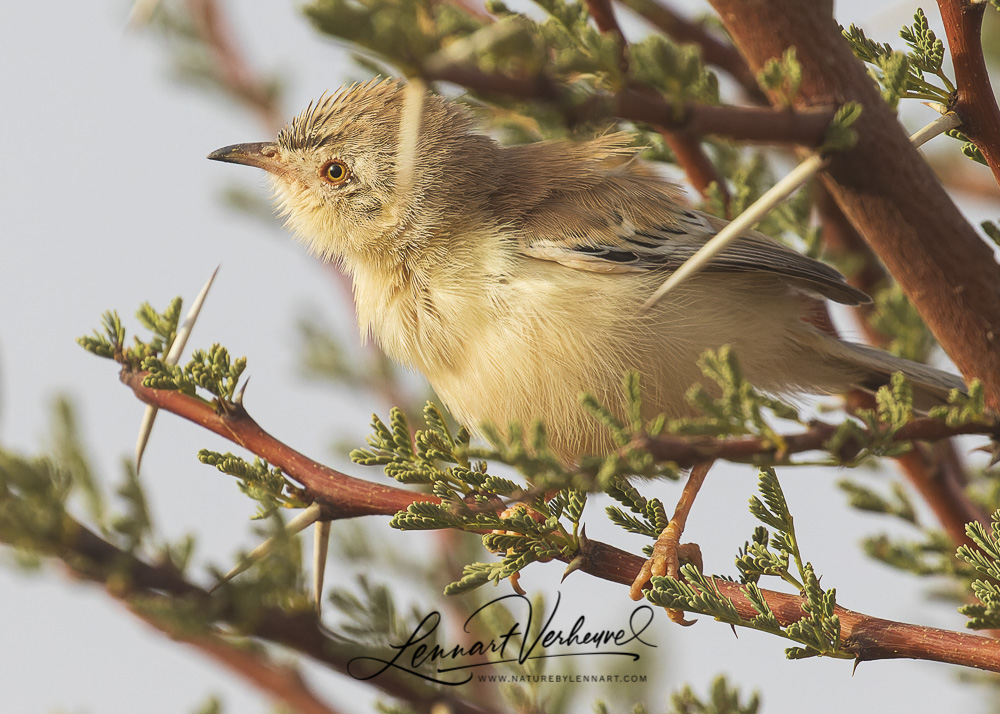
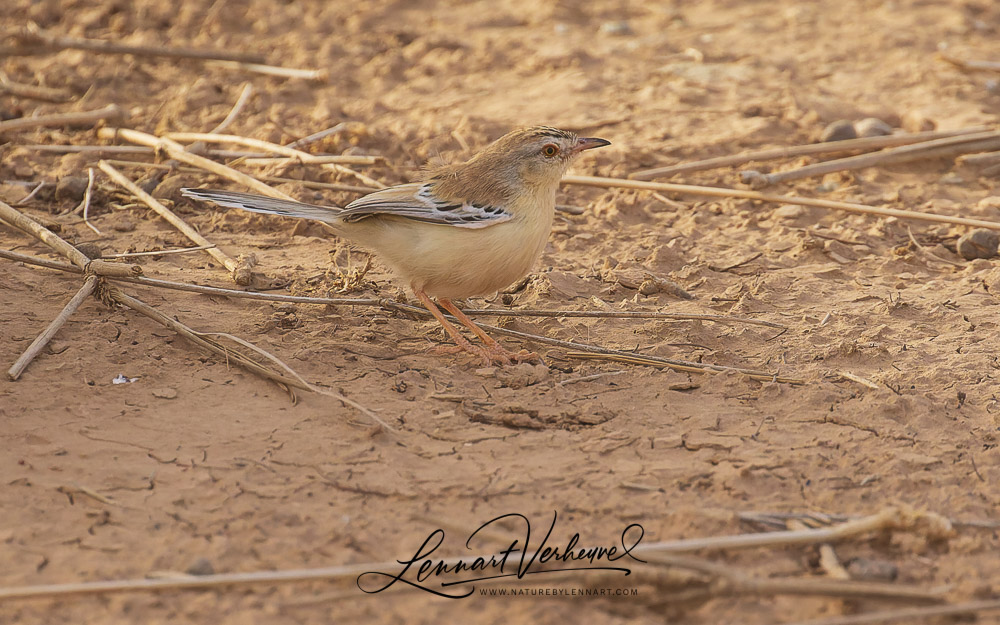
Cricket Warbler
Great Grey Shrikes make most birders happy. In the Sahara there is a sub species that is also called the Desert Great Grey Shrike. I wasn’t able to get a good picture of them the whole week, but on the last evening I suddenly encountered one that did not fly away. Succes at last!
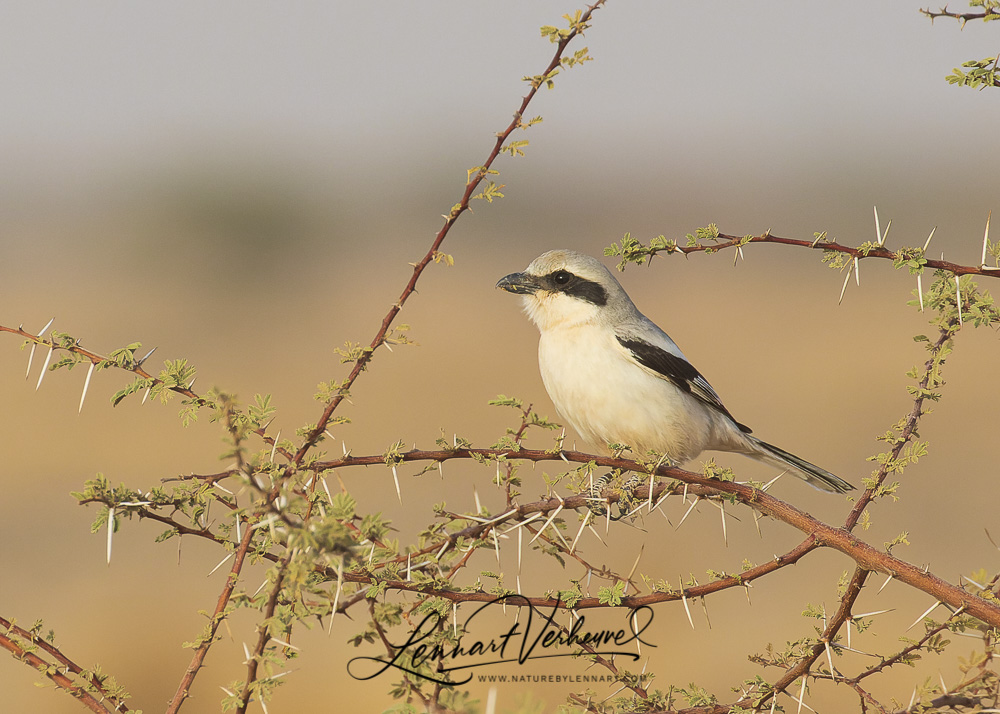

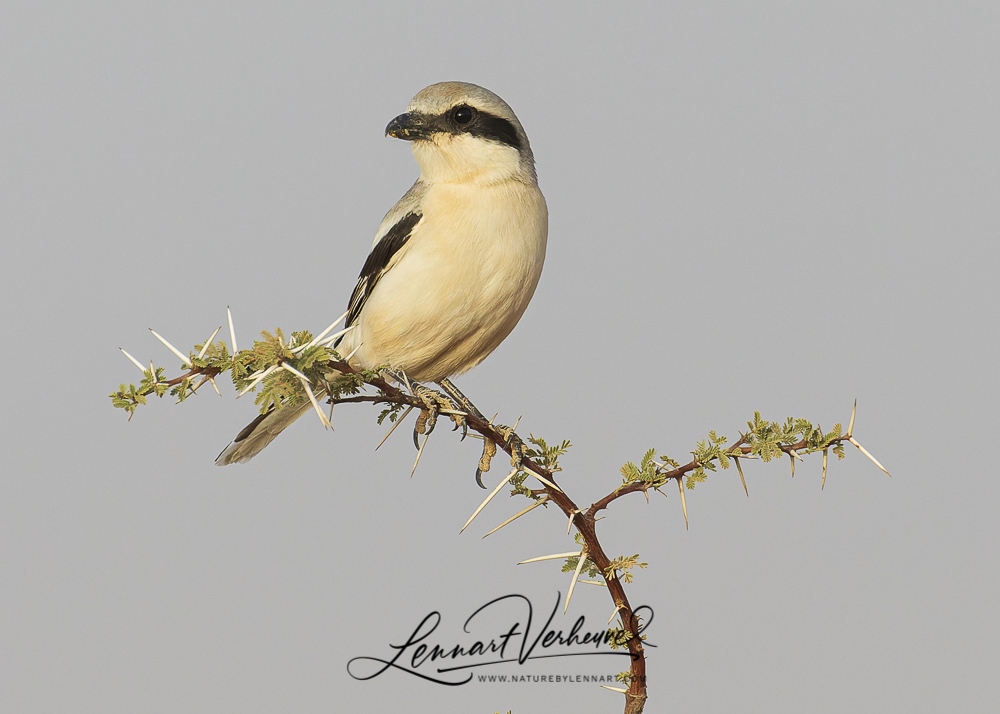
Desert Great Grey Shrike
A Desert Sparrow is another typical Saharan specialty. Luckily they weren’t so hard to find. Especially the male is a lot more different from our own House Sparrow. A nice little bird!

Desert Sparrow
I’ll finish this post with a larger bird: the Long-legged Buzzard, again a desert specialist. Here is a picture of it in its habitat, the bird didn’t let me get closer anyway.
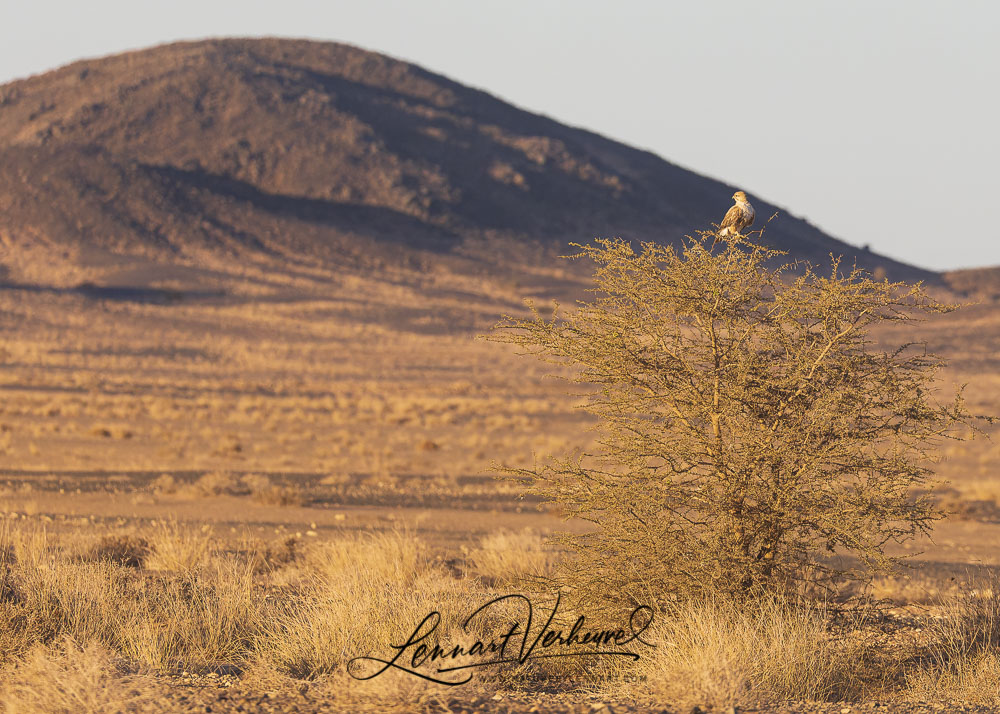
Long-legged Buzzard
Read more about our adventure with the Sand Cat.
Read about our nocturnal searchings for animals.
Look here for some pictures of the Western Saharan landscapes.
Look here for a trip report!
2 comments so far
SusannePosted on9:35 am - May 29, 2025
Prachtige foto’s! Was voor mijn zoons spreekbeurt op zoek naar info over en plaatjes van vogels van de Sahara en kwam bij jouw pagina terecht!
Lennart VerheuvelPosted on6:53 pm - Jun 20, 2025
Goed om te horen! Hopelijk is het een mooie spreekbeurt geworden!